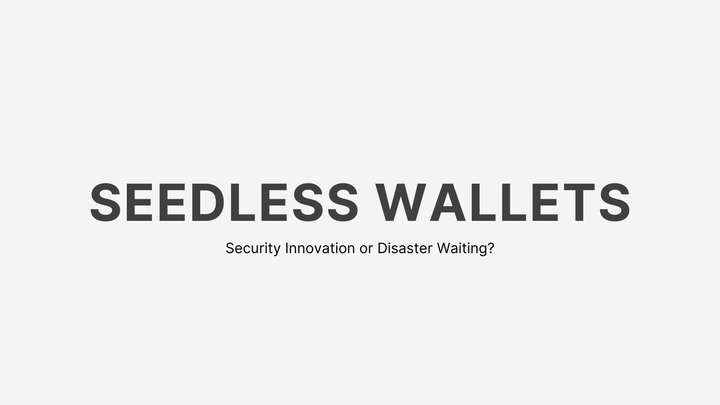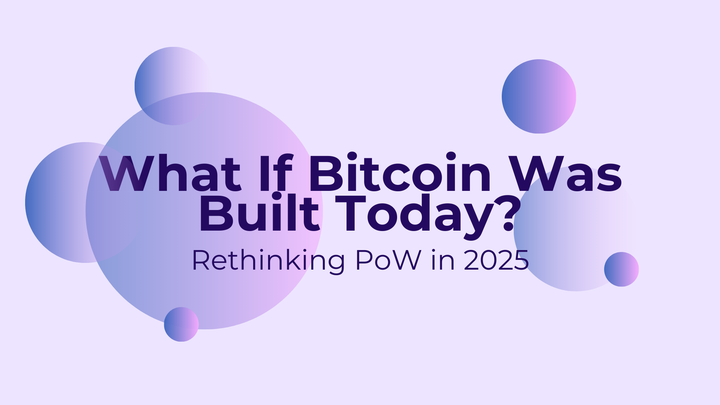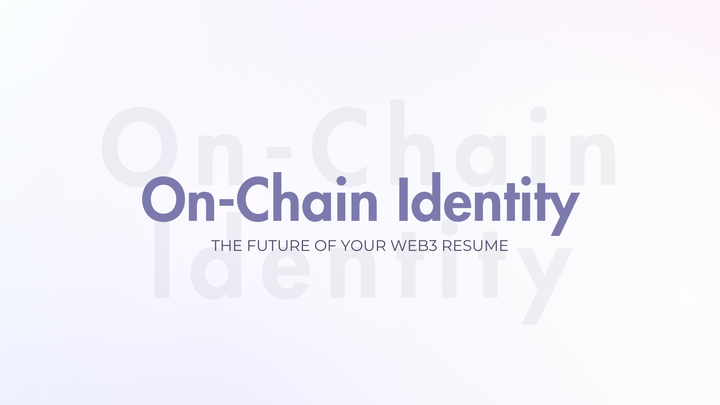The Move Language Meets Modular: Movement Labs' Bet on Parallelization

In the rapidly evolving landscape of blockchain technology, scalability, security, and interoperability remain critical challenges. As decentralized applications (dApps) grow in complexity and user adoption, traditional blockchain architectures often struggle to balance high transaction throughput with robust security. Movement Labs, a San Francisco-based blockchain development team, is tackling these challenges head-on by leveraging the Move programming language, a modular blockchain framework, and an innovative approach to parallelization. This article explores how Movement Labs is redefining the Web3 ecosystem through its integrated approach, with a particular focus on its flagship products, the Move Virtual Machine (MoveVM), and its layer-2 (L2) solutions, M1 and M2. By combining the security-first design of Move with modular architecture and parallel execution, Movement Labs is poised to transform the blockchain industry.
The Move Programming Language: A Foundation for Security and Expressiveness
Originally developed by Meta (then Facebook) for its Diem blockchain project, Move is a Rust-based programming language designed specifically for smart contracts. Unlike Solidity, Ethereum’s dominant smart contract language, Move emphasizes security, ownership, and resource management. Its core innovation lies in its resource-oriented programming paradigm, where assets are represented as "resources" that cannot be duplicated or accidentally destroyed. This ensures scarcity and access control, mitigating common vulnerabilities like reentrancy attacks, which have cost the blockchain industry billions over $5.4 billion between 2022 and 2023 alone, affecting protocols like Curve and KyberSwap.
Move’s design prioritizes formal verification, a mathematical approach to proving the correctness of smart contracts. Supported by the Move Prover, developers can verify that their code behaves as intended, reducing the risk of bugs and exploits. Move’s explicit resource abilities simplify the development of secure smart contracts for tasks like asset transfers, minting, and burning. Additionally, Move’s platform-agnostic nature allows it to be used across different blockchains, fostering cross-chain libraries and developer communities.
Movement Labs recognized Move’s potential early on. Founded in 2022 by Rushi Manche and Cooper Scanlon, both early contributors to the Move ecosystem, the company aims to address two major pain points in blockchain infrastructure: poor user experience and smart contract vulnerabilities. “The two biggest issues in blockchain infrastructure at the moment are poor user experience and smart contract exploits,” said Manche. “Move addresses the shortcomings of Solidity, and we are bringing it to market in a crypto-native way.”
Movement Labs’ Vision: A Modular Blockchain Ecosystem
At the heart of Movement Labs’ approach is modularity—a design philosophy that breaks the blockchain stack into interchangeable components with clear interfaces. This contrasts with monolithic blockchain designs, where components like execution, consensus, and data availability are tightly coupled, limiting flexibility and scalability. Movement Labs’ modular framework allows developers to customize their blockchain stacks by selecting modules for consensus algorithms, storage systems, or data availability layers, such as Celestia for high-throughput data availability.
This modular architecture is embodied in Movement Labs’ flagship products: M1 and M2. M1, a community-first layer-1 blockchain incubated by Ava Labs, offers high transactions per second (TPS) through Move, instant finality, and native access to liquidity providers like BenQi and GMX via Avalanche Warp Messaging. M2, the first MoveVM-based layer-2 blockchain for Ethereum, integrates with Celestia’s Blobstream for cost-effective data availability and settles transactions on Ethereum, ensuring security and interoperability with the Ethereum ecosystem.
By leveraging modularity, Movement Labs enables developers to build application-specific chains tailored to the needs of DeFi, gaming, or supply chain applications. These chains can interoperate seamlessly, sharing liquidity and user bases through mechanisms like the AggLayer, a Polygon-led initiative that Movement Labs joined in July 2024. This integration marks Movement as the first Move-based network to unify liquidity across Move and Ethereum Virtual Machine (EVM) ecosystems, with $160 million in committed Total Value Locked (TVL) before its mainnet launch.
Parallelization: The Key to Scalability
One of Movement Labs’ most ambitious innovations is its focus on parallelization, a technique that allows multiple transactions to be processed concurrently rather than sequentially. Traditional blockchains, like Ethereum, process transactions one at a time, creating bottlenecks that limit throughput and increase latency. Parallelization, as implemented in Movement’s MoveVM, draws inspiration from high-performance blockchains like Solana, Aptos, and Sui, which use parallel execution to achieve TPS in the tens of thousands.
Movement Labs’ MoveVM incorporates Block-STM (Software Transactional Memory), a state-of-the-art parallel execution engine that enables concurrent transaction processing without requiring user input. Block-STM allows the MoveVM to achieve over 160,000 TPS, a significant leap over Ethereum’s current capacity of around 30 TPS. This high throughput is critical for applications requiring low latency, such as decentralized exchanges (DEXs) or gaming platforms.
Parallelization in MoveVM is further enhanced by its modular design. By decoupling the execution layer from consensus and data availability, MoveVM addresses inefficiencies in traditional virtual machines, such as those in Ethereum, where mempools, APIs, and block processing mechanisms create bottlenecks. MoveVM’s interoperability features, supported by SDKs with native bridging capabilities, allow seamless transaction flows across diverse blockchain networks, further optimizing parallel execution.
A key feature of Movement’s parallelization strategy is its support for both Move and EVM transactions. The Move-EVM interpreter converts EVM bytecode to Move bytecode, enabling Ethereum developers to deploy Solidity contracts on Movement’s network without modifying their code. This preserves the semantics of EVM contracts while leveraging Move’s parallelization and security features. For example, standard ERC-20 tokens can be deployed alongside Move-based dApps, creating a fully composable ecosystem where EVM and Move applications interoperate seamlessly.
Bridging Move and EVM Ecosystems
Movement Labs’ integration of Move with Ethereum’s ecosystem is a game-changer for Web3 developers. While Aptos and Sui pioneered Move’s use in independent layer-1 blockchains, their ecosystems are separate from Ethereum’s vast liquidity and user base. Movement Labs bridges this gap by bringing MoveVM to Ethereum as a layer-2 solution. M2, for instance, supports Sui Move, Aptos Move, and an embedded EVM interpreter (MEVM), allowing developers from both ecosystems to build on a single platform.
This interoperability is critical for addressing the fragmentation in the blockchain space. Move-based chains like Aptos and Sui, while high-performing, lack EVM compatibility, making it challenging for developers to tap into Ethereum’s established infrastructure. Movement Labs’ “Integrated Approach” combines modular elements—shared sequencing, formal verification, alternative data availability, and Ethereum settlement—to create a secure and scalable environment. By supporting Solidity contracts through a translator, Movement Labs ensures that developers can leverage Move’s security without abandoning Ethereum’s ecosystem.
The Move Stack, another Movement Labs innovation, is an execution layer framework compatible with popular rollup frameworks like Optimism, Polygon, and Arbitrum. This allows developers to launch high-performance MoveVM rollups with ease, customizing components like data availability (e.g., Celestia) or finality mechanisms (e.g., Movement’s decentralized shared sequencer). The Move Stack’s flexibility makes it a powerful tool for building interoperable, application-specific chains.
Security and Performance: The Movement Advantage
Security remains a top priority for Movement Labs. The Move language’s formal verification capabilities, combined with runtime code verification, prevent common attack vectors like reentrancy. This is particularly significant given the scale of smart contract exploits in recent years. Movement’s Move-EVM ensures that both Move and Solidity contracts are verified at runtime, enhancing security without sacrificing performance.
Performance is equally critical. Movement’s parallelized MoveVM, with its 160,000+ TPS capability, outperforms most existing blockchains. By settling transactions on Ethereum, Movement Labs ensures crypto-economic security while leveraging Celestia for cost-effective data availability. The result is a blockchain that offers high throughput, low latency, and affordable gas fees—key requirements for mass adoption.
Community and Ecosystem Growth
Movement Labs is not just building technology; it’s fostering a global community of Move developers. The Move Collective, an elite accelerator program, supports promising teams building on Movement’s network. The public testnet, launched in July 2024, allows developers to experiment with Movement’s infrastructure, with six launch partners already deploying applications. The MoveDrop incentivized testnet program further engages the community by rewarding participants with trophies, medals, and resources for contributing to the Parthenon mainnet.
Movement Labs’ $38 million Series A funding round, led by Polychain Capital in April 2024, underscores strong industry confidence. Investors like Binance Labs, Hack VC, and Aptos Labs recognize Movement’s potential to reshape the Web3 landscape. The funding supports the development of M2, the Move Stack, and open-source tooling like the Movement SDK and CLI, which simplify building and deploying Move-based applications.
MoveVM and Resource-Oriented Programming
The Move Virtual Machine (MoveVM), developed by Movement Labs, is a high-performance execution environment tailored for the Move programming language. Move’s resource-oriented paradigm represents digital assets as unique, non-duplicable "resources" with linear types, ensuring they cannot be copied or accidentally deleted. This design eliminates vulnerabilities like double-spending or reentrancy attacks, which have plagued Solidity-based smart contracts. Move’s type system enforces ownership rules at compile time, using a bytecode verifier to ensure compliance with Move’s semantics. The Move Prover, a formal verification tool, allows developers to mathematically prove contract correctness, reducing runtime errors. For instance, a Move smart contract for a decentralized exchange (DEX) can guarantee that token transfers occur only once per transaction, verified through the prover’s linear logic checks. MoveVM’s platform-agnostic design enables it to run on both layer-1 (e.g., M1) and layer-2 (e.g., M2) blockchains, supporting interoperability across ecosystems like Ethereum and Avalanche.
Block-STM and Parallel Execution
Movement Labs’ parallelization strategy hinges on Block-STM (Software Transactional Memory), an optimistic concurrency control mechanism that enables concurrent transaction processing. Unlike Ethereum’s sequential execution, Block-STM allows MoveVM to process multiple transactions simultaneously by speculatively executing them and resolving conflicts afterward. Each transaction is treated as a “transactional unit” with read and write sets, and Block-STM dynamically schedules these units across multiple threads. If conflicts arise (e.g., two transactions modifying the same state), Block-STM rolls back conflicting transactions and re-executes them, ensuring correctness without developer intervention. This approach achieves over 160,000 transactions per second (TPS) on Movement’s testnet, compared to Ethereum’s ~30 TPS. Block-STM’s efficiency stems from its use of multi-core processors, leveraging modern hardware to parallelize execution while maintaining deterministic outcomes. This makes it ideal for high-throughput applications like gaming or real-time DeFi trading.
Move-EVM Interpreter for Interoperability
The Move-EVM interpreter is a critical innovation, enabling Ethereum Virtual Machine (EVM) compatibility within MoveVM. It translates EVM bytecode into Move bytecode at runtime, allowing Solidity-based smart contracts to run on Movement’s infrastructure without modification. This preserves EVM semantics (e.g., gas metering, stack-based execution) while leveraging Move’s security and parallelization. For example, an ERC-20 token contract written in Solidity can be deployed on M2, Movement’s Ethereum layer-2, and benefit from MoveVM’s 160,000+ TPS and formal verification. The interpreter maps EVM opcodes to Move’s resource-oriented model, ensuring that state transitions remain secure. This interoperability bridges the Move and EVM ecosystems, allowing developers to access Ethereum’s $400 billion+ liquidity pool while using Move’s advanced features. The Move Stack further enhances this by supporting rollup frameworks like Optimism, enabling customized, high-performance chains.
Modular Architecture and Data Availability
Movement Labs’ modular design decouples execution, consensus, and data availability. M2, for instance, uses Celestia’s Blobstream for cost-effective data availability, storing transaction data off-chain while settling on Ethereum for security. The Movement SDK and CLI simplify the creation of application-specific chains, allowing developers to select modules like shared sequencers or alternative consensus algorithms (e.g., Avalanche’s Snowman). This modularity reduces gas costs by offloading data storage and supports interoperability via the AggLayer, unifying liquidity across Move and EVM chains. The result is a flexible, scalable framework that supports diverse use cases, from DeFi to NFT marketplaces, with minimal latency and high security.
The Road Ahead
Movement Labs’ bet on the Move language, modularity, and parallelization positions it as a leader in the next generation of blockchain technology. By addressing scalability, security, and interoperability, Movement Labs is paving the way for a more integrated and efficient Web3 ecosystem. Its ability to bridge Move and EVM ecosystems, combined with high-throughput parallel execution, makes it an attractive platform for developers building the future of DeFi, gaming, and beyond.
As Movement Labs prepares for the Parthenon mainnet launch, the blockchain industry is watching closely. With its innovative approach and strong community backing, Movement Labs is not just revolutionizing how blockchains are built—it’s redefining what’s possible in Web3.



Comments ()